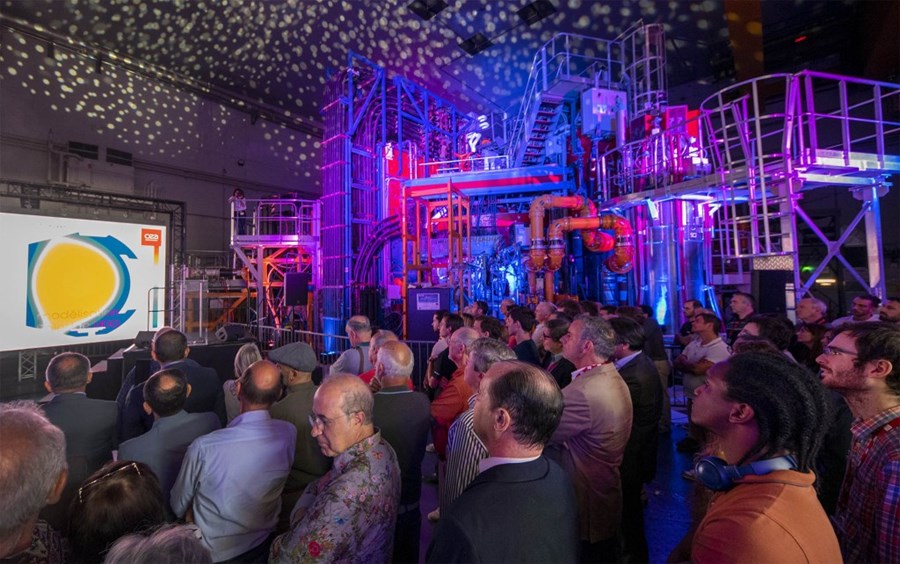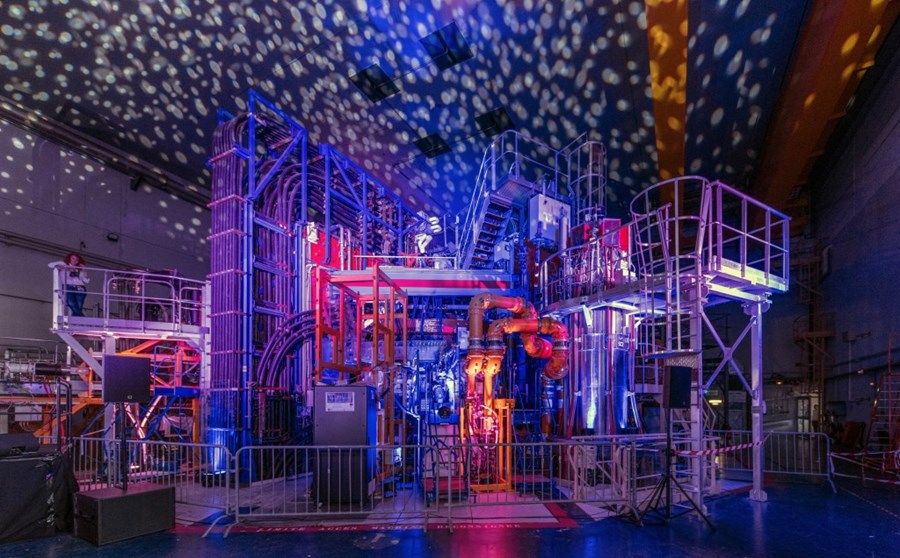In 2013, a quarter-century-old tokamak decided to reinvent itself and, under a new name, head for new horizons and objectives. Tore Supra—a CEA/Euratom device located one kilometre from ITER in the CEA-Cadarache research centre—was the first tokamak to implement superconducting magnets and actively cooled plasma-facing components. For close to two decades the machine held the record for plasma pulse duration with a 6.5-minute shot achieved in December 2003. The lessons learned constructing and operating Tore Supra largely contributed to the definition of ITER. The realization that a reinvented Tore Supra could contribute even more led to the WEST project; under this new identity, the machine has become a test bench for its big neighbour still under construction. Last week, WEST donned a suit of lights to celebrate the finalization of 14 weeks of an “intense experimental campaign” with its full ITER-like tungsten divertor.

The divertor is a crucial component whose role in a tokamak is to control the exhaust of waste gas and impurities from the plasma. During operation, the heat loads on the divertor’s plasma-facing elements can be as high as 10-20 MW per square metre, equivalent to those that a space shuttle or capsule encounter when re-entering the Earth’s atmosphere. The manufacturing of a divertor is in itself a major industrial challenge: in WEST’s case, the divertor comprises 456 actively cooled elements that are not all identical—some equipped with instrumentation, others not. Combining tungsten and copper, two metals that are particularly difficult to weld together, the elements need to be positioned within tolerances of 0.3 millimetres.
In September 2020, WEST’s Chinese partners within the SIFFER collaboration delivered the last batch of plasma-facing units that, once assembled in 30-degree sectors, form the WEST divertor. By December 2022, WEST had a fully operational, ITER-like divertor and launched its “Phase II” campaign centred on a succession of high-fluence pulses reaching or exceeding 100 seconds. The combined duration of the hundreds of plasmas produced in 14 weeks exceeded that of all plasmas produced since the device first started operating in 2016. Close to 30 fusion experts from nine different countries (Europe, the United States and Korea) participated in the campaign, confirming WEST’s international dimension and scope.

The lessons learned from Phase II experimentation are many. From an industrial point of view, the series manufacturing of 456 divertor elements was a successful first¹. The five-month-long assembly process, within extremely tight tolerances, has generated hands-on experience that will prove precious when assembling the ITER divertor. The focus of Phase II, however, was science: subjected to a punishing ITER-like environment, how did the ITER-like divertor behave? Although the accumulated data is still being analyzed, the ITER-like divertor has demonstrated its resistance and performance.
Following the current shutdown, a new experimental campaign will start in the autumn in close collaboration with the ITER Organization and the European Domestic Agency Fusion for Energy. A small proportion (4%) of WEST’s Chinese-procured divertor elements will be replaced with European² equivalents and exposed to the same long-duration pulses as in Phase II.

“With the first part of the Phase II campaign now over—and with the second planned this autumn—we will have accumulated a considerable amount of data to model and optimize the lifespan of the divertor in ITER and in future industrial power plants,” says Jérôme Bucalossi, head of the CEA institute IRFM (Institute for Magnetic Fusion Research) that operates WEST.

